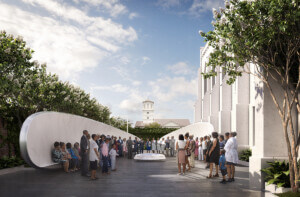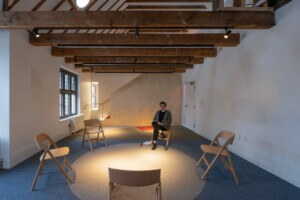One month ago, all of Paris and people around the world watched as flames rose high into the air above France’s beloved Notre Dame Cathedral. The sight was tragic and left many asking how, why, and what next.
The response was immediate and immense. Less than 48 hours after the Notre Dame fire, Prime Minister Édouard Philippe announced an international design competition to reimagine the iconic arrow-like spire atop the cathedral. In one week, over $1 billion was pledged to restore the cultural icon, with a promise by the president of France himself to rebuild the global landmark in under five years. Within days of that statement, design firms responded eagerly for their chance to impart their ideas on this historic building.
For designers, this competition could be viewed as the chance of a lifetime, the opportunity to make a mark on an icon of culture and history. But Notre Dame was far from the only house of worship to suffer catastrophic damage this year. Three historically black churches in Louisiana burned in a series of alleged hate crimes, three churches in Sri Lanka were bombed on Easter Sunday, and a mosque in Christchurch, New Zealand, was riddled with bullet holes, all just in the past few months.
All of these events are tragic too. Why is the design world addressing only one?
When the three churches of St. Landry Parish in southern Louisiana burned to the ground in the two weeks between March 26 and April 4, these fires quickly made the national news and became a springboard for conversations around race relations in our country. On a national scale, these discussions were, quite necessarily, about the hateful acts themselves, but failed to address what to do in their aftermath. It wasn’t until the massive financial response to the Notre Dame fire took off that a larger spotlight illuminated the plight of these churches as spaces and places in need of financial support as well.
People around the world began donating funds to the Seventh District Baptist Church’s GoFundMe page, which before the Notre Dame fire had only raised $50,000. In the two days following April 15, the day of the Notre Dame fire, the campaign brought in nearly $1 million. This display of generosity was not in multi-million dollar donations but in amounts ranging mostly from $5 to $20. One month later, the church has nearly $2.2 million to rebuild.
Despite the money now available, there has been no political charge and few design ideas put forward for the rebuilding of the three Louisiana churches. Does St. Landry Parish not warrant as bold a vision for its rebuilding efforts as Notre Dame?
One might say the Louisiana buildings were not on the same playing field as Notre Dame. And it’s true that they didn’t have the same grandeur of scale or the global affinity, but they had people who depended on them all the same. We need to stop idolizing the building as an icon, and instead, honor the people of a place.
This is also an opportunity to start bridging the expansive gap of access and inclusion that exists in today’s design community—the glaring lack of diversity within the makeup of our industry and its projects. It is a chance to refocus the lens of design beyond massive, global, and wealthy institutions to include those that capture the essence of all people and all experiences.
Design is a tool to bring people together and help foster conversations that can lead to healing. For communities in Louisiana, Christchurch, and Sri Lanka, communities that have had some of their most sacred places ravaged by the violence of hate, a new place can help people mourn what and whom they’ve lost, celebrate those lives, and then, in time, focus on their shared beliefs and common goals. A new place can help people to rise above the negativity of a few and honor the positivity of the whole.
We should always remember that design is for everyone, not just those where “funding is not an issue.” So let’s open our ears, our minds, and our hearts to the communities who need their voices heard and let’s expand on the definition of design so that it is no longer rooted in the things that we build but instead is measured by the experiences we shape and the memories we create.
Meredith McCarthy, AIA, is a senior associate with Sasaki. She is passionate about advancing equity and inclusion within the industry and through her design work with communities around the world.











